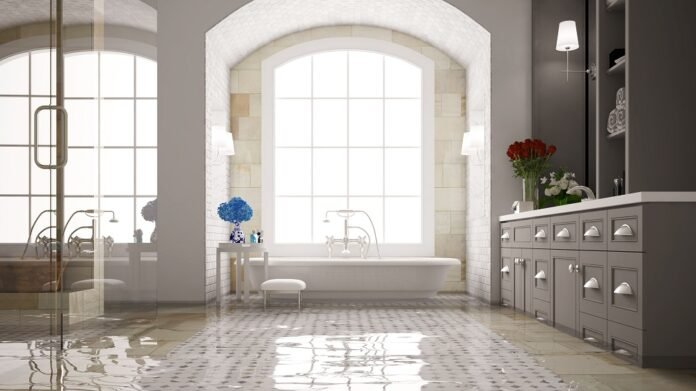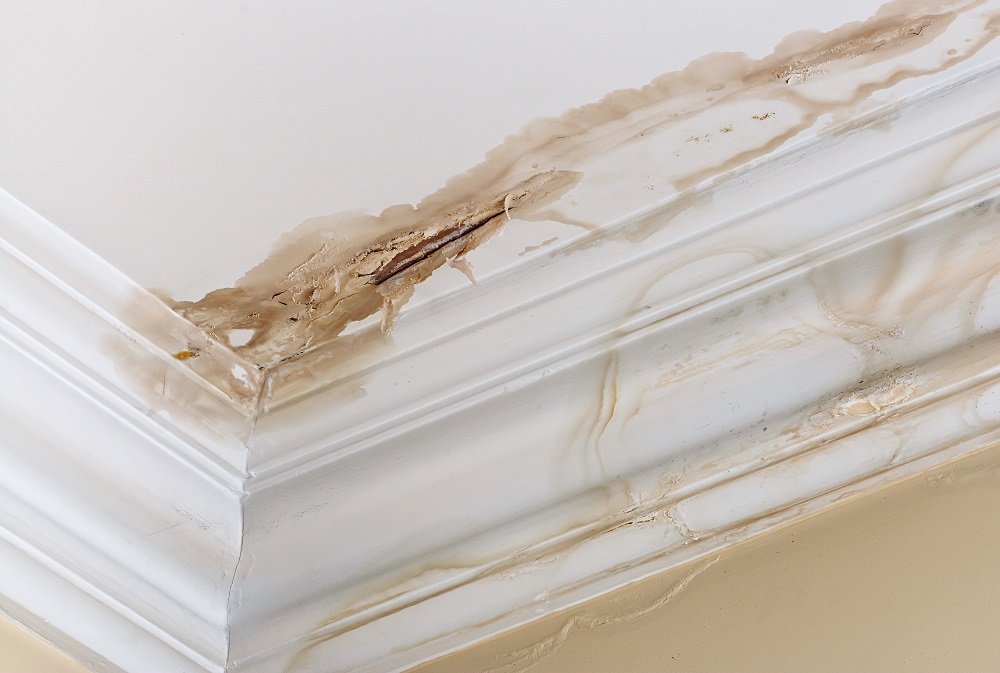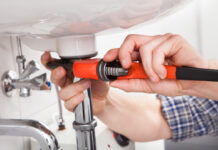Throughout the years, your home has to endure wear and tear, and one of the typical culprits is no other than water damage. Keeping your home sound is crucial in preventing problems that can steadily lead to significant harm over time. Remember, water damage will require a costly restoration job.
The presence of leaks and buildup of moisture in your home can cause damage before you’re even aware there’s an issue. However, it won’t develop without warning signs you should watch out for. As part of regular care and maintenance for your home, stay vigilant for these, so you can take necessary actions to prevent further damage while keeping your household safe at the same time.
Is The Water Danger New Or Old?
Once you encounter the signs of water damage inside your home, you need to determine how old it is. Always remember, age is a consideration if you’re going to deal with the repairs. It’d be best to watch out for clues as you decide whether to tackle it yourself or call a professional from https://www.summitclean.com/water-damage-restoration-salem-oregon and others if you’re eager to learn more about the problem and the appropriate solutions.
- Consistency of the material. If the water damage has been present for some time, the material tends to have a pulpy texture.
- Discoloration. The presence of discoloration serves as evidence of recurrent soaking and drying of the material.
- Signs of rotting. Once the floor, baseboards, and framing show evident signs of rot, it indicates prolonged exposure to water.
- Formation of mold and mildew. The presence of mold on any surface is a sign of water damage at least several days old.
Common Causes Of Water Damage
In almost any home, there are several causes of water damage, such as the following:
- Flooding due to a natural calamity or severe weather event
- Leaking roof
- A dripping or obstructed sink or toilet
- Poor heating, ventilation, air conditioning (HVAC) system maintenance with excessive buildup of moisture
- Accumulation of water and moisture in certain sections of the house, such as the crawlspaces and attic
- Poor landscaping in which water seeps into the foundation of the house
- Ruptured or burst pipe or sewer line
- Unattended water for an extended perio
Among these common causes of damage, the water from a natural disaster or weather event can cause significant harm, especially if severe flooding lasts for days. However, most issues with water damage stem from minor plumbing problems overlooked or ignored.
Locations To Check For Water Damage
There are usual locations where water damage is likely to show. Knowing the sites will make it easier for you to monitor any progressing issues and pinpoint previous problems. Here are some of the typical sources of water damage:
- Leaking pipes in the floor, walls, and under the cabinets
- Leaking faucets that steadily drip water on the cabinets
- Appliances utilizing water such as the refrigerator, washing machine, water heater, and dishwasher
- Damage to the roofing, especially on the gutters, flashing, and shingles
- Formation of cracks in the foundation due to poor drainage around the house
Warning Signs Of Water Damage
The indications of water damage aren’t always evident. It can range from a small puddle of water on the floor or an undesirable musty smell due to mold growth in an area you can’t see or reach.
If you want to keep your home in good shape and avoid costly repairs, here are some of the warning signs you shouldn’t ignore:
1. Unusual Odors
When you have standing water and moist material, they serve as ideal breeding grounds for bacteria, mold, and rot. In most instances, these typically develop on porous materials such as drywall, wood, and carpet.
You often can’t see the damage within the wall or under the flooring, but later on, you’d notice an earthy, musty odor similar to the smell of moist leaves during fall. In worse cases where there’s damage or leakage from the sewer line, you can smell the sewage.
For most homeowners, the odor can be unappealing. Opening the doors and windows, cleaning the house, or using air fresheners won’t eliminate the odor since you can’t deal with the source. The best way to freshen up the air is to fix the leakage or condensation problem and eventually eliminate or thoroughly clean the damaged material.
Nonetheless, remember that not all types of molds produce odor. With this in mind, the absence of undesirable odor doesn’t always mean your house has no water damage.
2. Standing Water
One of the apparent indications of water damage is a puddle of water in areas where it shouldn’t be. If you find one near an appliance, pipe, or fixture, you should inspect any signs of damage. For example, there’s a possibility that your appliances and fixtures on the upper floor of your home might be responsible for leakage through the ceiling.
If you have uneven flooring in your home, the water can flow and build up in a different location not close to the source.
If the water originates from a potential leak in the roof, you can figure out the site of damage by assessing the roof from the attic, but it might not always be possible. Water is likely to infiltrate an area of the roof, especially if there’s a weak spot. As part of maintenance, schedule an inspection by a professional to pinpoint any damage.
3. Cracking Or Peeling Paint And Wallpaper
When condensation forms due to poor insulation or a pipe in the wall are sweating or leaking, moisture will steadily build up within the wall. As the moisture seeps through, it can damage the paint and wallpaper. First, you’ll notice bubbles forming and leaving behind brownish or yellowish stains.
If bubbling and peeling of the paint and wallpaper occur all over the walls, it’s due to an elevated level of indoor humidity. The damage and stains on the wall that manifests in a straight line follow the wall’s pipe alignment. Once you pinpoint these signs, it means there’s an issue with the pipe.
The formation of stains, dampness, and degradation of the walls indicates condensation issues brought about by insufficient ventilation or leakage from poor drainage in the foundation.
4. Mold Formation
The formation of mold is a sure indication of water damage in your home. It’s crucial to note that mold prefers moist or damp conditions. If you notice it in one part of your home, it means there’s excess moisture. You can quickly identify it as flat blotches of grey, brown, black, green, or orange; also, it can vary in color and texture.
When mold is present inside a cabinet, around the toilet or sink, on the floor, or the wall over piping, the plumbing or fixture is likely sweating excessively. In addition, the formation of mold around the windows indicates an issue with condensation, but it’s best to inspect it closely.
If mold develops in dark, cool sections all over the house, especially under the rugs, behind furniture, or on the undersides of shelves, it’s a sign that the indoor humidity level is high.
5. Floor Damage
Depending on the exact source of the water, gravity plays a role where it’ll always end up on the flooring. Once the water reaches the floor, it can seep into the tiles, carpets, and wood flooring, eventually infiltrating the subflooring and joists.
Since water damage to the flooring is a common concern, you should find time to assess your floor if you suspect moisture issues thoroughly. Here are some of the indications you have to watch out for:
- Stains. When water is left to linger on the floor, it leaves behind dark-colored blotches, especially in wood flooring.
- Cracking. Tile flooring might crack and sink once the subflooring endures significant water damage where it could no longer provide adequate support.
- Warping and expansion. Once there are drastic alterations to the level of moisture, it causes wooden flooring to warp. The wood floor will appear distorted, and gaps develop in between them. If both wood and laminate floorboards soak up a large amount of water, they can expand and turn up at the borders, resulting in an elevated seam between every board.
- Buckling. Wood flooring that absorbs large amounts of water is likely to separate from the subflooring and bend into serrated peaks.
- Sagging. When wood flooring endures repeated or long-term water damage, rotting will occur. In most cases, it becomes soft and spongy once you step on it and sag later on. On any floor, water can infiltrate the subflooring.
- Bubbling. Water damage has a detrimental effect on the upper protective and aesthetic layers of laminate flooring. If this type of floor is thoroughly soaked, the layers will bubble.
6. Sagging Ceilings And Walls
Once you notice the sagging of the wall or ceiling, it’s a sign of water damage you shouldn’t ignore. When a severe leak or a minor one is left unchecked, the excess weight on the structures can cause sagging or bulging.
The issue is likely to occur in ceilings of rooms that have constantly overflowing toilets or tubs. In most cases, it only affects the area close to the source of the leakage, but the damage can grow bigger if neglected. Consider this type of water damage as a potential safety hazard since there’s the risk for the ceiling or wall to collapse.
Conclusion
Water damage in the house can be a challenging ordeal. The resulting problems affect not only the overall structural integrity of your home but also the health of your household. Once you discover any of these warning signs of water damage, take action right away to save yourself from costly repairs.



















